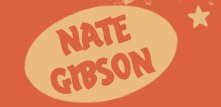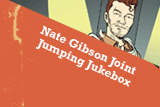 |
 |
|
 |

 Do you like pirates? Do you like joke books? Well, you are in luck! Back in 2001, pirate connoisseurs Tim Barney and Nate Gibson teamed up with Emerson Comedy Workshop to present the 101 (actually, 114) of the best (actually, the worst) pirate jokes available in print with the release of 101 Pirate Jokes. They have even gone so far as to provide several tips (see below) which may be helpful when telling these jokes at work or at home. While marooned together in the Port of Boston, MA, Barney and Gibson spent six grueling months writing and editing the world’s best pirate jokes ever told. Why did they do this? Because they believed in the simple idea that pirates are funny. Pirates kill people and burn villages and are still adored by children the world over. That’s funny. Pirates look for booty. Booty is funny. The poop deck is funny. And scurvy is hilarious. However, not everything related to pirates is funny and it took two sophisticated minds to sort it all out. For example, many pirates kept parrots as pets. Jimmy Buffet fans are called parrot heads. One might think there is a joke to be made here, but there isn’t. It’s close, but there is no joke. Similarly, pirates wave Jolly Rogers. Many children like Jolly Ranchers. Despite the similarity, there really isn’t a funny joke anywhere here either. Barney and Gibson were clever enough to avoid these common pratfalls of pirate humor and stick to the jokes that worked. The book comes complete with dozens of wacky pirate illustrations by Sir Bradley “Ay, Walk the Prank” Smith. These illustrations are important and reap large rewards. For example, hypothetically, if the authors were unclever enough to tell the joke, “How did so many pirates lose their teeth?” and their only answer was that, “They played hockey!” their only escape from eternal embarrassment would be to include a graphic illustration supporting the limp humor of the aforementioned joke. Hockey wasn’t even around in the heyday of pirates. It’s an awful excuse for humor. But if the authors could show teeth falling out of a pirate’s mouth as the result of a brutal hockey stick blow, well then they just might be comic heroes. Further, Tim Barney and Nate Gibson’s 101 Pirate Jokes also features an extensive pirate glossary. It is important that, when telling a pirate joke, the audience is well informed on their pirate terminology. If one goes for the “Schooner or later” variety of jokes or a “Pieces of eight” joke, the audience needs to know what the jokester is talking about. If the audience seems confused, the jokester might be better off sticking to “ARRR!” jokes rather than the branier joke like “What do you get when you mix a pirate and a zucchini? A Squashbuckler!” That same jokester may also want to avoid using pop-culture-based punchlines such as “Land-Ho Calrissian” or “Scott Baio-net.” In this book, the authors have provided very scientific and meticulously researched definitions, such as “Schooner: A big-ass pirate ship,” “Pillaging: Plundering” and “Plundering: Pillaging.” These definitions will no doubt enhance the humor within. Another popular feature of the joke book is the last page of jokes, which are so terrible you simply must rip them out of the book (dotted line to rip along is provided)! No other joke book offers this incentive. Other joke books try to pass off all of their jokes as equals. Barney and Gibson know better than to do this. However, they also recognize the value of their worst jokes. In fact, some of these have become author favorites (i.e. “Why was the pirate stuck to the cannon? Because his hook was magnetic!” “Where do Spanish pirates eat? At the Taco Bell/KFC merger!” and of course, “What did the father pirate say to the baby pirate? There’s no Santa Claus and I’m not your real father!”). The authors have allowed for you to decide which jokes stay in the book, which jokes get trashed and which jokes get framed and hung in your living room. 101 Pirate Jokes is 68 pages chock full of piratey goodness, published in 2001 by the Emerson Comedy Workshop of Emerson College (founded by Sir Denis Leary). Sure, you may have seen one or two of these jokes printed in other joke books, but do you really want to buy 70-80 different joke books you don’t want just to get the few cherished pirate jokes you love? Now, with Barney and Gibson’s soon-to-be cult classic, you get all the best pirate jokes gathered together for the first time between two 2-color covers. However, it should be noted: Although this book may look like a children’s joke book, be not fooled! It does indeed contain a few jokes that may not be suitable for the wee ones. They aren’t many, but they are there. A few books are available at Zip Dang! in Madison, WI or by tracking down one of the co-authors in person. Only a limited number of books remain and once they are gone, you will need to pirate your own copy. A few helpful tips for telling pirate jokes:
|
|
|